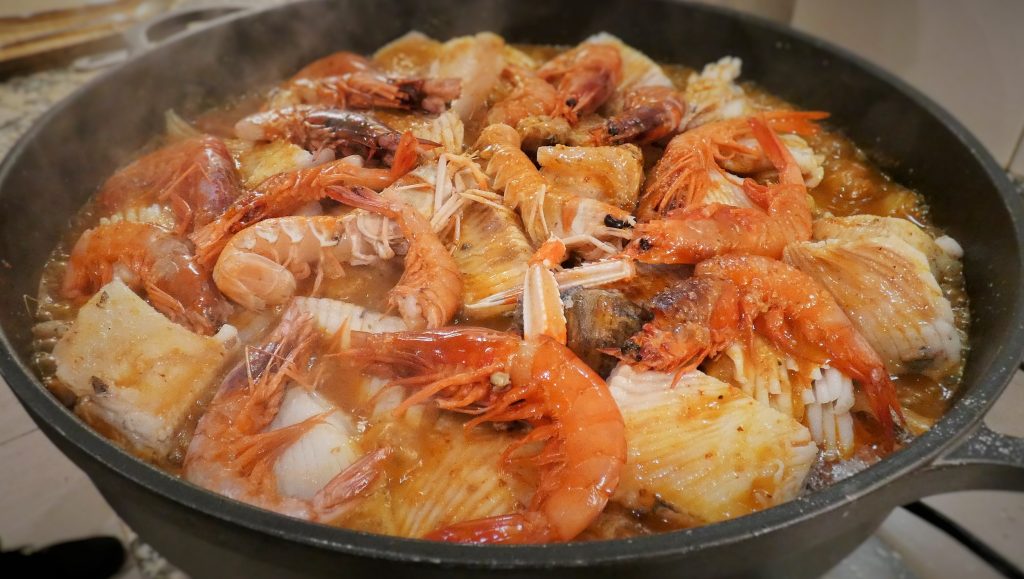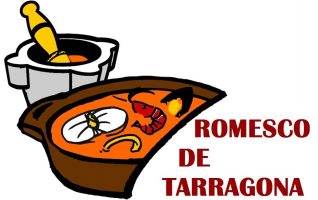This website does not pretend extol for recipes or specific methods. Every professional chef or every hobbyist makes their own Romesco, so it is very difficult to talk about canonical recipes. As with all great dishes, Romesco is a paradigm of diversity and flexibility: when a Romesco is cooked, almost nothing is exhaustive, mandatory or irrevocable. On the other hand, on the Romesco there are already excellent treatises written by specialists, which are available to anyone who wants to deepen, and which have been related in detail in the bibliography of this website.
Contemporary cuisine has gone from being a technique to being an art, and from art it has become a true language. Contemporary chefs, both professionals and amateurs, experiment and create in a context without barriers, without complexes or pre-established concepts. In this scenario, the Romesco is sure that it is already being the inspiration of creators who will elevate it to new approaches and concepts. For this reason, the recipes section of this website only suggests some simple and affordable elaborations based on traditional and historical ways and means, with the aim of facilitating the possibility for any fan to start from the base to try on their own and discover for themselves same the possibilities. In addition, existing Romesco recipes are very diverse and can differ markedly in terms of ingredients, amounts, cooking procedures, and other factors. For this reason, in the elaborations that this section of the web proposes, we have started from the most basic references, with the idea of offering a starting point that is well accessible.
This section offers three types of recipes related to Romesco:
On the one hand, four traditional Romescos: Fish Romesco, Cuttlefish Romesco with potatoes and a very simple Cod Romesquet for just two people. Also added, with a somewhat anecdotal sense, is the recipe that the author used in the mackerel Romesco that he cooked at El Bulli for Ferran Adrià and his team in August 2020.
On the other hand, three recipes that it is suggested to cook using a certain amount of the base Romesco mix in order to contribute part of the Romesco personality to these elaborations, hence they are called romesqued dishes: specifically, these are romesqued rossejats noodles (dorados), a tradicional fisherme rice that is also romesqued, and a romesqued cream of seafood.
Two cold sauces derived from Romesco are also proposed: a general-purpose romesco sauce for seasoning seafood or grilled fish, meat or vegetables; and the Balandra, a seasoning sauce of not very well known fishing tradition and which is excellent for seasoning fish or even rice or other stews.
To finish, a recipe for tripe is suggested, since Romesco was -and can be- perfectly applicable to dishes that are not necessarily fish dishes. There is also a simple recipe for making the fish stock referred to in the previous recipes, although other stock recipes can of course be used.
Recipe overview.
Fish weight.
In all recipes, the weight of the fish mentioned refers to clean, ready-to-cook pieces. It is not easy to calculate the yield of the fish, however and as a general reference, it can be said that in the cases of fish such as sea bream, sea bass, monkfish or turbot, to name a few, this yield is around 50-60%. For example: if a whole turbot weighs 3 kg without cleaning, once clean we will obtain approximately 1.8 kg of fish slices ready to cook. This does not mean that other parts derived from cleaning the fish can be reused, for example, to make fish stock.
How to fry the dried ancho peppers for the Romesco recipes on this website.
A general aspect of practically all the recipes on this website is the way of working the dried ancho pepper, something that constitutes a key issue in the result of any Romesco.
In the following recipes the lightly fried dried ancho pepper will be used. This is the recommended way on this website, especially because it is a way of working with the pepper that is quite original, traditional and characteristic of Romesco, and also because it is the one that possibly offers the best results. The process that will allow the pepper to be fried satisfactorily is explained below:
• We start by opening the dried ancho peppers along their entire length with scissors, and carefully removing the tail and the inner seeds.
• It is ideal to have a small frying pan of about 17 cm in diameter and pour into it 120 ml of olive oil approximately, which we can reuse. The reason for using a small frying pan is that this amount of oil will be distributed on the surface of the pan while maintaining a considerable depth, which will facilitate this operation.
• We heat the oil without it getting to smoke and, taking the open ancho pepper with kitchen tongs in one hand, and the handle of the pan with the other, we will submerge the open ancho pepper in the oil carefully and no more than three or four seconds for each side, checking that the inside of the pepper changes to a lighter color tone. This operation must be done very carefully, since this type of peppers burn easily, later making the stew bitter.
• We leave the dried ancho pepper already fried on a plate with kitchen absorbent paper until it cools well, for about five minutes. We will then check its fragrant aroma and also the fact that the pepper has become rigid and brittle, ready to be used.
• With just a little practice, we will be able to fry the dried ancho peppers so that they are perfect for a good Romesco: brittle and aromatic but with hardly any darkened (burned) parts.
However, in the previous chapter Tricks and tips, there are indications for using dried ancho pepper in a Romesco in alternative ways to frying it, such as scraping its pulp after rehydrate the peppers or using the microwave.
Variations.
Naturally, all the recipes that are explained are very flexible and can be adapted according to taste. Here are some variations that can be made:
• In cases where cephalopods are indicated as ingredients (eg cuttlefish), of course squid rings, sliced squid or others could also be used. It would even be possible to do without cephalopods entirely, except for Romesco’s recipe for cuttlefish with potatoes.
• In general, cuttlefish can be cut into cubes (larger pieces) or diced (smaller pieces), according to taste, although it is always better cooked if it is in small cubes. In some recipes it may be more interesting for the cuttlefish to be present in larger pieces (cubes), as would be the case with the Romesco of cuttlefish with potatoes.
• When seafood is indicated as ingredients (for example, prawns), naturally norway lobsters, galleys, etc. could also be used, or even shellfish omitted.
• When mollusks are indicated as ingredients (for example, japanese clams) they can naturally be substituted for another mollusks, or even mollusks can be omitted.
• Almost all recipes will allow shellfish or shellfish, even if not explicitly mentioned in some cases.
• In the case of wanting to use galleys as shellfish, it is necessary to bear in mind that the galleys can be added to the recipe completely peeled. To do this, it will be necessary to keep them in the freezer for 30 minutes, and then open them by cutting their two long sides with scissors and remove all their meat in one long piece. The leftover heads and shells can be used to make broth, and it is advisable to cut them into small pieces with kitchen scissors before using them in the broth.
• In most recipes it is also possible to try combining different fish, although it is preferable not to mix different cephalopods.
• Before pouring the broth into the stew, it may be a good idea to first pass it through the container in which we have made the Romesco base mix, in order to wash it off and thus make the most of the mixture.
• In Romesco recipes that contain potatoes, they can be used raw, or having been lightly fried and previously fried in the same pan, just after adding the oil.
In all cases, it is also recommended to consult the Tricks and tips chapter. The use of the Romesco calculator is also suggested, which allows having references of ingredients and quantities for a Romesco of any number of diners.

